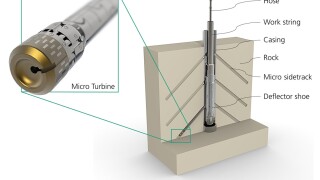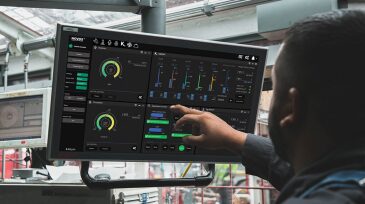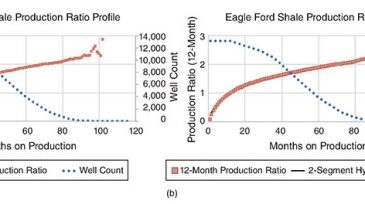Drilling
The Federal Reserve Bank of Dallas’ fourth-quarter energy survey shows that oil prices and geopolitical uncertainty are curbing enthusiasm heading into the new year.
A field test study examines micro turbine drilling in a clay formation that allows steel casing and formation to be drilled in a single operation.
The discovery in the Kutei Basin offshore Indonesia is being considered for fast-track development.
-
The new geothermal project development company will offer expertise in subsurface and drilling, project development, and risk mitigation.
-
Valaris, formed in 2018 after the merger of Houston-based Rowan Cos. and London's Ensco, faces fallout from the oil-price drop, canceled or delayed drilling programs, and contract and day rate modifications.
-
Citing impacts from COVID-19, Noble Corp. is entering into a prearranged agreement with its bondholders that will give it a fresh start with a new line of credit.
-
The complete paper presents a technical discussion of a new microsampling technique for LWD and a corresponding wellsite technique to provide compositional interpretation, contamination assessment, reservoir-fluid compositional grading, and reservoir compartmentalization assessment.
-
A well was drilled into a prospective unconventional mudstone play offshore Norway. Two of five coring runs were successful while the rest yielded little to no core recovery. Subsequent investigation of the core substantiated that the coring issues largely had natural causes.
-
An intelligent drilling optimization application performs as an adaptive autodriller. In the Marcellus Shale, ROP improved 61% and 39% and drilling performance, measured as hours on bottom, improved 25%.
-
Logging-while-drilling remote operations has hit a wall. Since the outbreak of COVID-19, there is an increased demand for personnel with multidisciplinary skill sets to work on offshore rigs. But the demand cannot be satiated.
-
Apache, Qatar, and Shell clinch best discovery, best new venturer, and energy transition leader.
-
While drilling in deepwater Gulf of Mexico, a topdrive failure forced the shutdown of all drilling operations for the rig operator and lasted for 114 hours.
-
The complete paper discusses the use of cumulative production ratio curves normalized to a given reference volume in time for different unconventional plays in North America to investigate the median trend for each play and the median ultimate recovery per play.













